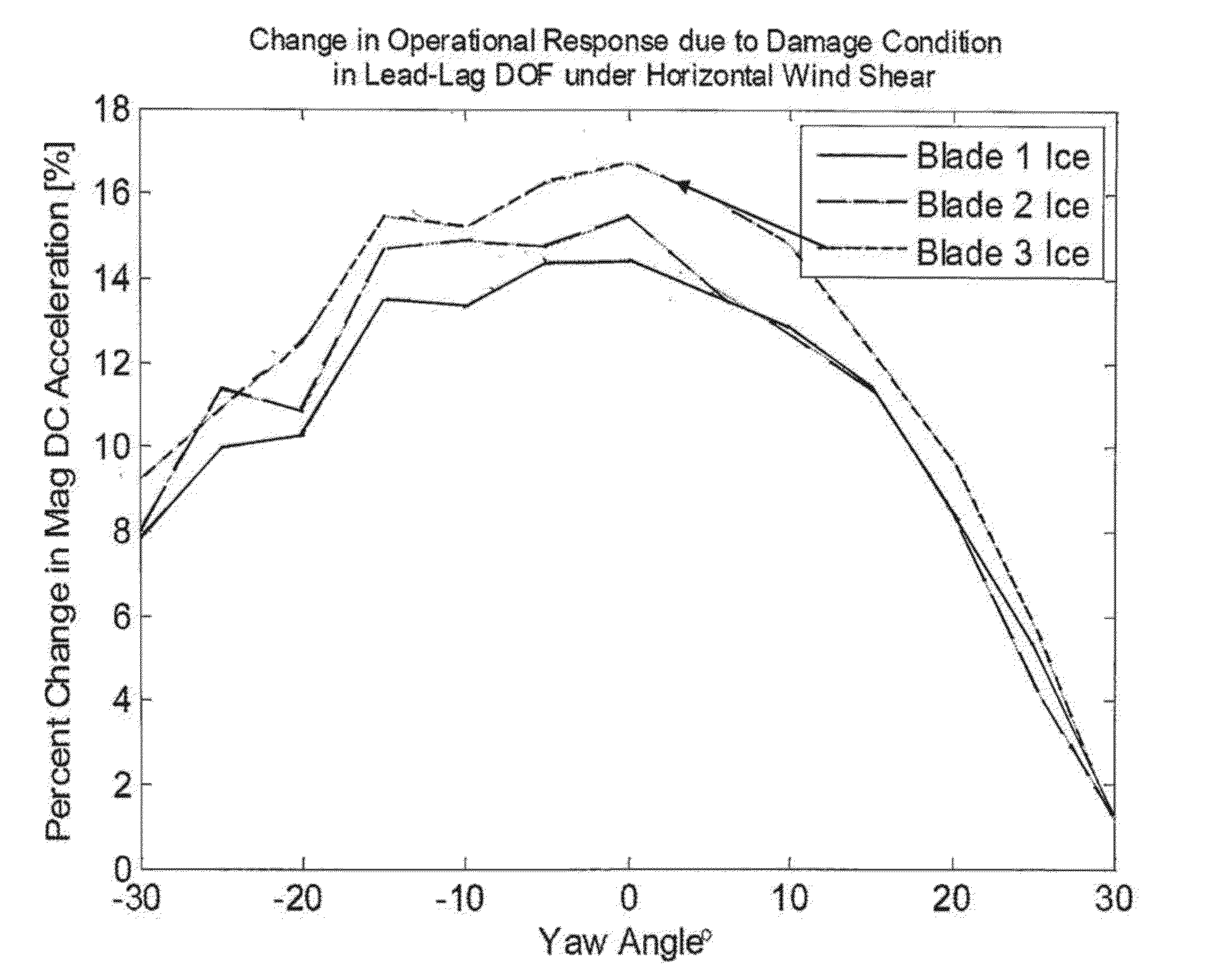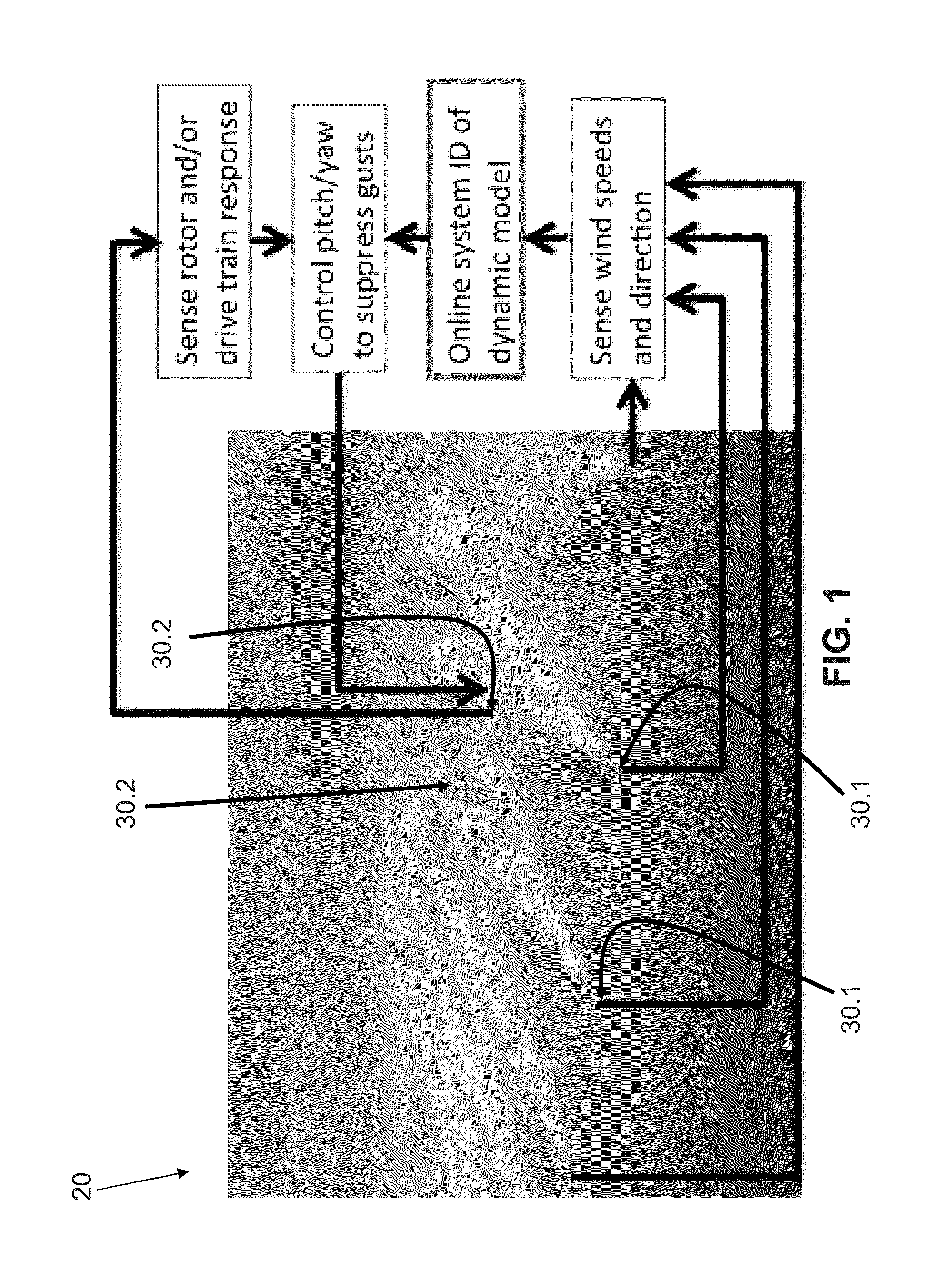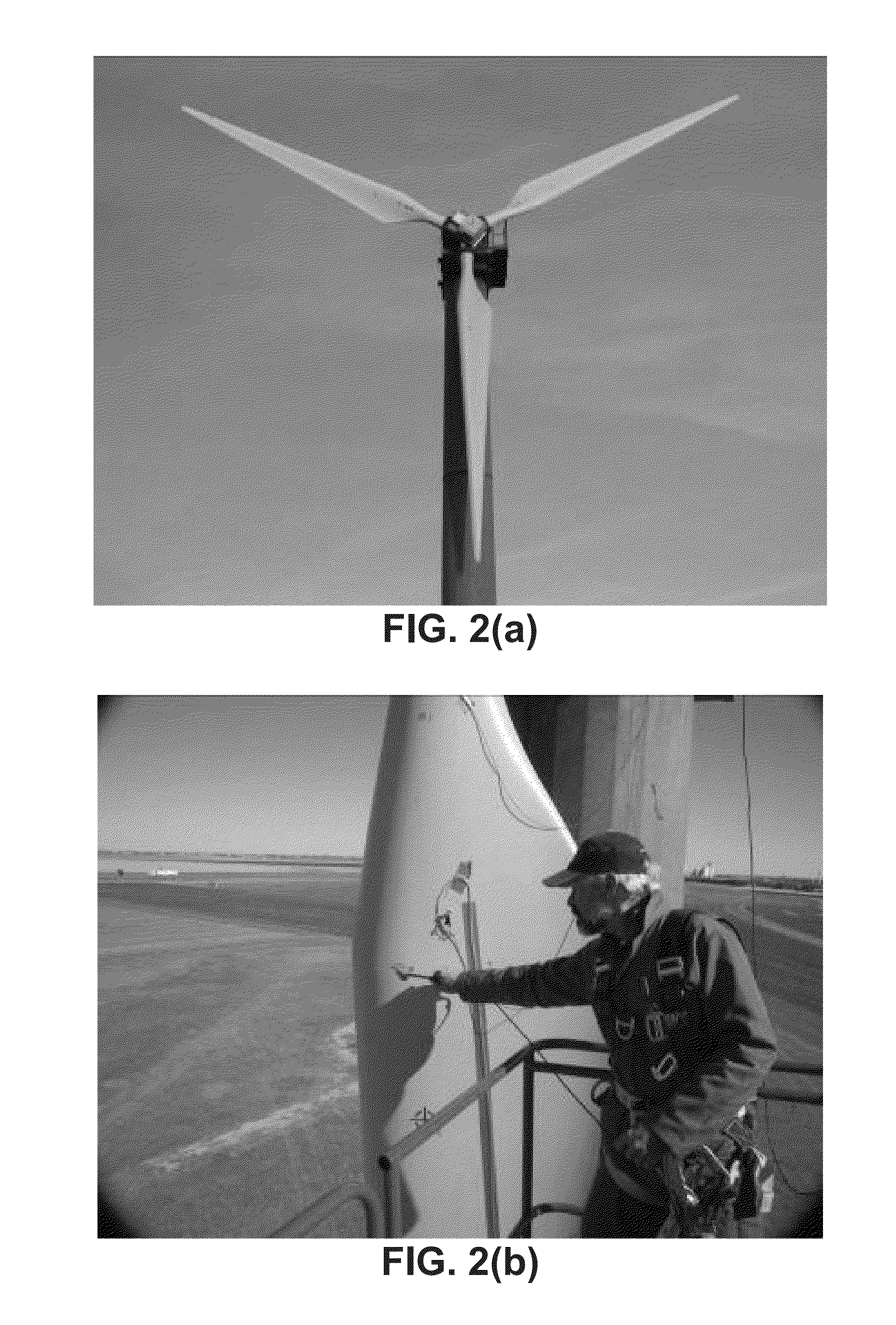Wind direction data gathered at this location is used to control
yaw position, but this data does not capture real-time wind events.
Turbines often suffer from
yaw error, or a lack of perpendicularity to the oncoming
wind flow.
Yaw error leads to a decrease of energy capture and subjects the turbine to large fatigue loads.
Improper yaw alignment has been shown to create a local rotor blade
angle of attack near stall.
The addition of
tower shadow effects and the cyclic separation and reattachment of flow over the rotor blades create large aerodynamic loads beyond static stall values.
Yaw position errors can be contributed to several factors such as
hysteresis in drive components, improper yaw sensor mesh, development of backlash in yaw position sensors and long time constants between sensor responses and drive action.
This method relied on continuous changes in yaw angle resulting in large time constants for correct perpendicular yaw alignment and an inability to align in
non steady state wind flow.
These systems focus on the wind state and do not directly identify the loads experience by the rotor.
However, this measurement position is not ideal for sensing
wind speed due to interference that is created by the blades and
nacelle.
Furthermore, the
wind speed often varies across the rotor disk due to vertical and horizontal
wind shear, as a result of the atmospheric boundary layer and other phenomena such as wake flow, but cup anemometers and wind vanes are incapable of measuring these variations.
Wind direction data that is gathered by these sensors is used in part to control the yaw position, but this data yields an incomplete perspective of the force distribution on the rotor, which is of most interest for increasing energy capture and monitoring the
structural integrity of the turbine.
Because of these sensor errors, turbines often suffer from a lack of perpendicularity to the oncoming
wind flow; this is known as yaw error.
This condition leads to a decrease in energy capture and large fatigue loads on the turbine.
Improper yaw alignment has been shown to create a local rotor blade
angle of attack near stall.
The addition of
tower shadow effects and the cyclic separation and reattachment of flow over the rotor blades create large aerodynamic loads beyond static stall values.
The source of
yaw control errors can be contributed to several different factors such as
hysteresis in drive components, improper yaw sensor mesh, development of backlash in yaw position sensors and long time constants between sensor responses and drive action.
Wind turbines can experience yaw error routinely due to the dynamic nature of the wind as it continuously changes direction.
This method relies on continuous changes in yaw angle resulting in large time constants for correct perpendicular yaw alignment and an inability to align in
non steady state wind flow.
Other methods utilize costly Doppler
LIDAR (
Light Detection And
Ranging) systems, which apply lasers for three-dimensional mapping of the wind inflow to a turbine.
These systems focus on the wind state and do not identify the loads experienced by the rotor blades.
In addition to
yaw control errors, wind turbines can also suffer from
pitch control errors.
The sources of
pitch error are similar to those for yaw error and include
hysteresis in pitch drive components, development of backlash in pitch position sensors and improper installation of the rotor blade in the field.
Power deficits, however, are not solely the result of incorrectly pitched blades.
Yaw error,
pitch error, rotor or
drivetrain damage, and wind and weather conditions can all lead to reduced power levels. FIG. 1-1 demonstrates this result in a 1 kW
horizontal axis wind turbine.
Note that for normalized
power output in the range of 70% and above, the reduction from 100% power can be due to either
pitch error or yaw error.
Without effective ice detection and removal, wind turbines can suffer power reductions as high as 30% per year.
In addition to the economic loss, blade
icing increases the wind loading experienced by the rotor blade due to a decrease in aerodynamic performance and rotor imbalance that can severely affect the
drivetrain.
As ice accumulates on the rotor blade in operation, shear and centrifugal forces act on the amassed ice, eventually leading to ice throw.
Ice throw of this magnitude can
pose a risk to civil structures and
human life.
There are currently no standard solutions on the market for reliable ice detection that can be used as a control input for the turbine's supervisory
system.
However, not all methods operate continuously and there is a need for reliable ice detection to facilitate the activation of the deicing
system.
Various sensors have been tested but have not performed satisfactorily.
There are four methods used for ice detection, but with limitations: 1)
Infrared spectroscopy is limited to monitoring one section of the blade and requires the installation of
fiber optic cables in the blade; 2) a flexible resonating diaphragm was shown to be effective but requires installation at multiple points inside the blade; 3)
ultrasound has been proven effective at detecting ice on aircraft but has not been implemented in wind turbine blades and is not well suited for retro-fitting; 4) a change in
capacitance was also measured using wires mounted in the surface of the blade.
 Login to View More
Login to View More  Login to View More
Login to View More 


